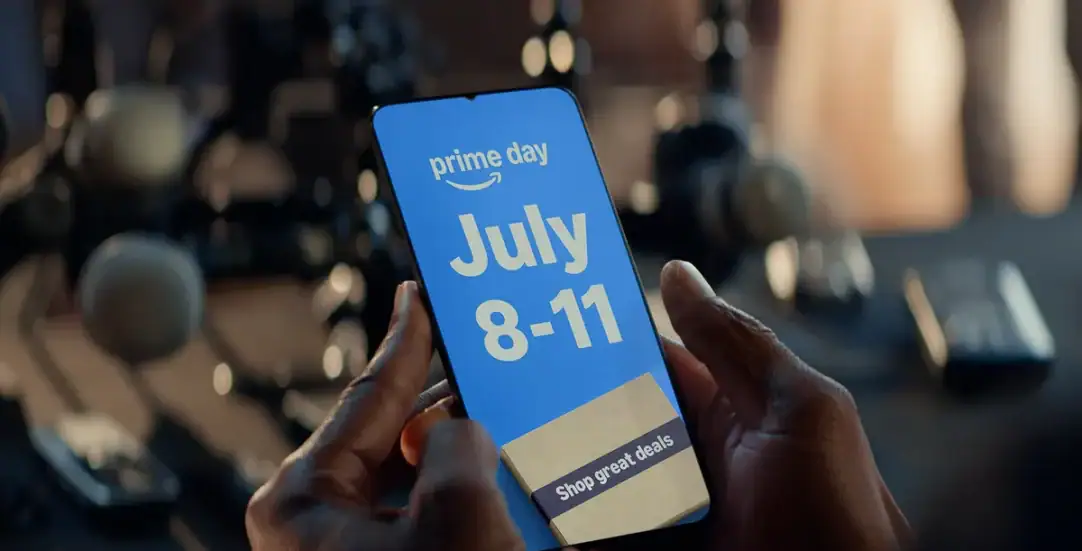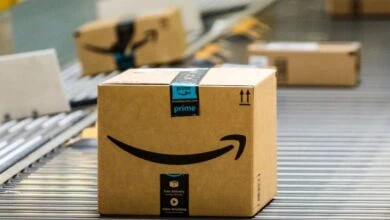Amazon Q2 performance and strategy: efficiency, hiring, and retail momentum

Amazon Q2 performance and strategy have drawn extra attention this year because the company is pushing hard on efficiency while still gearing up for big retail moments. In simple terms, Amazon is tightening spending in its core retail business, fine-tuning how it hires, and lining up the calendar for peak-season demand. These moves, taken together, help explain how the company is balancing cost control with growth opportunities as the year turns from spring into summer and beyond.
- The midyear backdrop: efficiency first in Amazon’s retail unit
- Amazon Q2 performance and strategy in context
- What fixed OpEx hiring means for teams and talent
- Cost discipline meets growth bets in retail and logistics
- Prime Day results signal shopper behavior and advertising upside
- Holiday readiness: seller schedules, fees, and inventory timing
- Workforce trends and margin goals under CEO Andy Jassy
- What it means for investors, sellers, and shoppers
- Outlook beyond Q2: how discipline can power the next stage
The midyear backdrop: efficiency first in Amazon’s retail unit
One clear trend shaping the midyear story is Amazon’s decision to keep a flat hiring budget for its retail business this year compared to 2024. Internally, the company described this as holding “flat headcount OpEx,” which covers salaries and stock-based compensation for corporate staff in the retail organization. The company’s move doesn’t apply to warehouse workers or Amazon Web Services. Rather, it’s focused on the corporate side of retail, which includes the online marketplace, logistics operations, and the Fresh grocery business. Amazon says this approach is a responsible way to grow at its scale and stresses that a steady hiring budget doesn’t mean hiring stops; the company continues to recruit based on need.
What’s different now is how managers plan their teams. Instead of being guided by headcount targets, where the number of people can be the focal point, retail managers are now operating within predefined budget limits. HR professionals often point out that budget-based planning offers tighter control in uncertain environments. Put simply, dollars come before seats. With a fixed labor budget, managers must weigh the mix of roles, levels, and skills they add, rather than chasing a certain number of hires. The retail unit has even rolled out tools to plan workforce mix by job level, technical skills, and tenure, and to track operating expenses more closely across the year.
Leaders in Amazon retail have been watching operating expenses carefully over the past two years. That watchfulness reflects a broader, yearslong cost-cutting push across the company after the pandemic boom faded and growth cooled. Amazon pulled back on warehouse expansion and shut down some experimental ventures as part of that adjustment. Taken together, these actions help explain the tone of the midyear: the company is still moving forward, but it’s not throwing money at problems. It’s asking managers to get more out of every dollar they spend, especially in the complex retail engine that touches everything from online storefronts to last-mile delivery.
For readers gauging Amazon Q2 performance and strategy, this backdrop matters a lot. The flat budget in retail corporate signals discipline. It nudges leaders to stay within limits, keep teams lean, and deploy talent more carefully. And because it’s an OpEx-first model, it aligns staffing decisions more directly with financial outcomes, which can be especially helpful when business conditions change fast. The tone is sober, but the message is not to stop building; it’s to build smart.
Amazon Q2 performance and strategy in context
When you put Amazon Q2 performance and strategy in context, what you see is a company that’s combining restraint with selective offense. Since taking the helm in 2021, CEO Andy Jassy has pushed for higher efficiency and healthier margins. Under his watch, Amazon has cut jobs, reshaped pay, trimmed management layers, and even rethought how products are listed. The results speak to that drive: Amazon posted record profit of $59 billion in 2024, nearly double the prior year. That number doesn’t reveal quarter-by-quarter details, but it does support the idea that tighter operations can go hand in hand with strong earnings.
The retail business’s fixed OpEx hiring approach is one more sign of that discipline. Budgets will be scrutinized, and any increase needs a robust justification. Managers are being asked to balance their teams carefully and to consider the cost implications of every hire. New planning and reporting tools help break down the workforce by job level, skill, and tenure, with the goal of giving leaders better levers for matching talent to the work that matters most. In this way, Amazon Q2 performance and strategy reflect a mindset: make each team, and each dollar, do more.
It’s also important to recognize what this policy doesn’t cover. The flat hiring budget is limited to corporate staff within retail. Warehouse teams and AWS are not in scope. Amazon emphasizes that each of its businesses has its own hiring approach, shaped by its needs, and that it has long balanced both the number of people and the costs tied to those decisions. That nuance helps explain why Amazon Q2 performance and strategy can look different from one part of the company to another.
Finally, the retail leadership’s comments add color. Retail chief Doug Herrington has examined operating expenses closely for two years and told employees that belt-tightening would likely extend into 2025, even as Amazon invests heavily in big new businesses elsewhere. His message was straightforward: keep reducing costs so the company can fund its largest bets. For anyone following Amazon Q2 performance and strategy, that logic ties execution in the here-and-now to long-term ambition.
What fixed OpEx hiring means for teams and talent
Moving from headcount targets to OpEx budgets changes how teams get built. In a headcount-led world, a manager might be able to add a high-cost hire because the “slot” exists, even if the salary stretches the budget. In a strict budget world, that same decision gets tougher. As one human resources professor explained, fixed labor budgets push managers to stay within clear financial limits, which can lead to fewer new hires or candidates with lower compensation. In practice, that means leaders are likely to prioritize roles that deliver immediate value and rethink the balance of senior versus junior staff. It’s not about cutting corners; it’s about matching spend to outcomes.
Another expert pointed out that budget-based models offer flexibility in staffing. Without a headcount target to hit, managers can blend in contractors or temporary workers when the work is uneven or seasonal. And they aren’t pressured to “use up” approved positions, which can lead to slimmer, more focused teams. HR practitioners also note that this method gives tighter financial control, a useful tool when markets are unsettled or demand is hard to forecast. For Amazon’s retail arm, which spans marketplace operations, logistics, and grocery, that flexibility can help smooth peaks and valleys throughout the year.
There’s also a cultural effect. When teams see that budgets, not just seats, drive decisions, conversations shift. Leaders spend more time aligning scope with spend and mapping skills to the most important problems. With new reporting tools that let managers plan headcount mix by job level, technical skills, and tenure, decisions can get sharper and more data-informed. That’s good for clarity and accountability. It also links hiring more closely to customer outcomes, because every expense must be tied to a plan.
Does this change slow innovation? It depends on execution. Budget limits can feel tight, but they can also spark creativity. Teams often find smarter processes or better tooling when resources are scarce. For Amazon Q2 performance and strategy, the test is whether the company can keep delighting customers while managing spending with care. Given the record profit in 2024 and the ongoing focus on operational excellence, the company is clearly betting that disciplined hiring and sharper planning will keep the engine running strong.
Cost discipline meets growth bets in retail and logistics
Amazon’s retail chief Doug Herrington was candid with employees: the cost belt would stay tight into 2025, even as the company invests in major new businesses. That dual track—save here, spend big there—captures the heart of the strategy. On one side, the retail organization is laser-focused on trimming expenses, enforcing budget discipline, and using better analytics to track headcount and operating costs. On the other, Amazon is still channeling significant capital into areas it believes can carry the company higher. While those investment areas aren’t listed line by line here, Herrington’s message underlines the trade-off: lower costs in mature operations make room for bold moves elsewhere.
To make that work, the operating model inside retail has to be precise. The move from headcount targets to OpEx limits hands managers a fixed envelope. Within it, they can tune their teams by job level, skill mix, and tenure to meet the needs of the marketplace, logistics network, and Fresh grocery. Investing in new reporting and planning tools isn’t just paperwork. It’s a practical way to give leaders real-time visibility into spend, so they can adjust quickly as conditions change. That’s essential in retail, where volumes can swing with seasons, promotions, and macro trends.
The cost discipline is also a continuation of a broader reset after the pandemic surge cooled. Amazon responded to slower growth by cutting back on warehouse expansion and closing some experimental ventures. It also reduced its overall headcount after rapid hiring earlier in the decade. These steps are not about shrinking the company’s ambitions. They’re about removing friction, tightening the machine, and making sure each part is pulling its weight. When a company as large as Amazon does that, the effects can show up in margin improvement and better capital allocation.
For Amazon Q2 performance and strategy, this matters because midyear is often when plans get real. Managers see how first-half results are tracking and adjust to hit targets for the back half. With tighter budgets and better tools, Amazon’s retail leaders can aim for the same—or better—customer outcomes with less waste. In that sense, cost discipline isn’t just a defensive move. It’s an enabler, freeing up resources for the big bets that could define the company’s next chapter.
Prime Day results signal shopper behavior and advertising upside
Prime Day turned ten this year, and Amazon stretched the 2025 event to four days, from July 8 to July 11. The company said the event generated record sales and more items sold than any previous four-day period that included a Prime Day. While Amazon didn’t share specific numbers, outside data offers useful angles. Early on, some wondered if sales would lag, with one analytics firm tracking softer demand at the start. Even so, that firm’s final read showed total sales growth of 4.9% compared to the combined performance of 2024’s two-day Prime Day and the two days immediately after. The longer window likely helped smooth demand across the event.
Shopper behavior painted a clear picture. According to Numerator, the average order size during Prime Day 2025 was $53.34, and nearly two-thirds of households placed two or more orders, pushing average household spend to about $156.37. The mix leaned toward lower-priced, everyday essentials instead of big-ticket items, a shift shaped by ongoing economic pressures and the new four-day format. For Amazon, this is still a win if it keeps Prime members engaged and active across categories. As one industry watcher put it, the event is a success if it adds subscribers or increases shopping activity among current members.
Another telling insight came from NielsenIQ: extending the event increased total sales while lowering daily averages. That might sound obvious, but the twist is advertising. A longer event gives Amazon twice the time to sell ads and drive sponsored placements, a revenue stream that benefits from sustained attention. Broader market data supports the scale of online activity during the Prime Day period. Adobe estimated U.S. retailers collectively drove about $24.1 billion in online spend, up over 30% year over year. Price-sensitive shoppers also leaned more on buy now, pay later, which made up 8.1% of online orders, up from 7.4% in 2024.
How does this feed into Amazon Q2 performance and strategy? Even though Prime Day falls in the next quarter, it influences midyear planning. The retail team’s budget discipline and staffing flexibility can help prepare for the surge in demand and advertising opportunities that come with the event. And the shift toward essentials suggests that inventory planning and pricing need to stay sharp. A tighter, more data-driven operating model is well-suited to meet those realities.
Holiday readiness: seller schedules, fees, and inventory timing
Amazon has also laid out the holiday game plan for sellers, and those calendars matter for anyone watching momentum build after Q2. Submissions for Prime Big Deal Days “Best Deals” and “Lightning Deals” are open and close on September 12. To retain the Prime badge, inventory should arrive on specific timelines: August 29 for Amazon Warehousing and Distribution (AWD), September 10 for Fulfillment by Amazon (FBA) with minimal shipment splits, and September 19 for FBA with Amazon-optimized shipment splits. These dates help sellers map out when to ship and how to stage inventory so it’s ready for customers.
For the Black Friday/Cyber Monday Week event, the deal submission window is open and closes October 28. Inventory deadlines for Prime-badge eligibility are October 9 for AWD, October 20 for FBA with minimal splits, and October 30 for FBA with Amazon-optimized splits. Amazon also said that submissions for Prime Exclusive Price Discounts open on September 10, and coupon submissions will open once event dates are publicly announced. These details aren’t just housekeeping. They’re what allow the marketplace to hum when peak traffic hits.
There’s also a cost note for sellers using Amazon’s fulfillment services during the busy season. Holiday peak fulfillment fees will apply from October 15, 2025, through January 14, 2026, covering FBA, Remote Fulfillment with FBA, Multi-Channel Fulfillment, and Buy with Prime. Amazon points sellers to the FBA Peak Readiness Playbook in Seller Central for guidance. Whether you’re a brand planning a Prime Badge strategy or a reseller preparing for Cyber Week, these deadlines and fees shape your margin math and logistics timeline.
For Amazon Q2 performance and strategy watchers, this holiday readiness shows how the company coordinates with its seller ecosystem long before carts fill up. Clear dates, defined fee windows, and eligibility rules reduce friction when volumes spike. They also align with the broader emphasis on planning and cost control inside Amazon’s retail business. When everyone from internal teams to third-party sellers works against a shared calendar, the whole network becomes more predictable and efficient.
Workforce trends and margin goals under CEO Andy Jassy
To understand Amazon Q2 performance and strategy, it helps to look at the workforce arc under CEO Andy Jassy. After rapid growth from 2019 to 2021 took the headcount to about 1.6 million, the company later pulled back. By last year, that number dipped to roughly 1.55 million, with at least 27,000 roles cut since late 2022. Jassy’s broader playbook has included slimming management layers, revamping pay, and rethinking the product listing approach to save money and improve speed. These moves were part of a larger cost-cutting effort after the pandemic surge gave way to slower growth.
That discipline showed up in the company’s bottom line. Amazon reported record profit of $59 billion in 2024, nearly double the prior year. It’s a sign that tighter cost control and better operating leverage can pay off at scale. The retail unit’s current hiring budget policy fits right into this theme. It creates clear financial boundaries for managers, encouraging them to match compensation to impact and to treat staffing as a lever for margins, not just output.
The approach also recognizes that Amazon is not one monolith. As the company notes, each business has its own hiring needs and models. Warehouse staffing and AWS are separate from retail corporate policies, which helps ensure that operational roles and cloud services can hire based on demand. Across the company, leaders have historically considered both the number of people and the cost of those hires. Put differently, the culture asks managers to think about headcount and OpEx together, not in isolation.
For employees and job seekers, the message is nuanced. Amazon is continuing to hire, but it’s doing so with a sharper pencil, especially in retail corporate roles. Teams that can clearly connect their work to customer outcomes and financial goals are likely to find support. For Amazon Q2 performance and strategy, this mindset is important. It keeps the business moving forward while protecting margins, and it reinforces a culture where investments are earned with data and results.
What it means for investors, sellers, and shoppers
Investors often view budget discipline as a positive signal. By holding the retail hiring budget flat, Amazon is keeping a lid on operating expenses while using new tools to deploy talent where it matters. That can support margins, especially when paired with strong advertising demand around tentpole events like Prime Day. Extended sales windows can create more ad inventory, which benefits a business that earns revenue from sponsored placements as well as goods. For those following Amazon Q2 performance and strategy, this blend of thrift and focus hints at a company that wants sustainable growth, not just a short-term pop.
Sellers, meanwhile, get clarity from Amazon’s holiday schedule. Knowing deal submission deadlines and inventory arrival dates lets brands plan campaigns and ship on time to maintain their Prime badges. Clear dates also help third-party sellers balance costs against potential upside. Peak-season fees are spelled out, so margin planning isn’t a guessing game. This ecosystem coordination supports a smoother peak, which is good for both sellers and customers.
Shoppers see the benefits in the form of reliable delivery, well-timed deals, and a wide selection. The 2025 Prime Day data suggests buyers focused on everyday essentials and placed multiple smaller orders. If that pattern holds, it encourages Amazon and sellers to keep pricing sharp on staples. The rise in buy now, pay later use during the Prime Day period also points to price sensitivity, and that’s where efficient operations matter. When costs are controlled behind the scenes, it’s easier to offer compelling prices up front.
All told, Amazon Q2 performance and strategy point to a careful balance. The company is keeping spending in check in retail corporate while still preparing for high-volume events and investing in new areas. That mix can feel tight at times, but it builds a foundation for steady, long-term progress. For investors, sellers, and shoppers alike, the signals are consistent: disciplined planning, clear calendars, and a focus on value.
Outlook beyond Q2: how discipline can power the next stage
Looking past the second quarter, the path forward rests on the same pillars visible today. Amazon retail is using fixed OpEx budgets to guide hiring, deploying new tools to track expenses, and keeping a close eye on costs. Leaders are asking teams to do more with less, but not in a way that stalls innovation. Instead, they’re trying to remove waste so that resources can flow to the biggest, highest-impact opportunities. As retail chief Doug Herrington put it, keeping costs down helps fund ambitious new businesses. That’s a simple idea, but it takes discipline to execute at scale.
Industry experts note that many tech firms adopted OpEx targets after the pandemic, driven by higher labor costs and choppy revenue. The model gives managers more flexibility, including the option to use contractors or temporary workers, and it reduces pressure to fill seats just because they’re approved. For Amazon Q2 performance and strategy, that broader industry context is important. It’s not an isolated experiment; it’s part of a wider shift toward tighter, more agile management of people and spend.
Events on the retail calendar will keep testing the model. Prime Day’s extended format showed how customer demand and ad revenue can evolve when discount windows lengthen. The holiday season will test logistics and inventory readiness, where clear shipping deadlines and fee schedules help reduce surprises. If the company and its sellers hit those notes, the benefits show up in customer experience and financial results. The steady focus on essentials that surfaced in Prime Day data also suggests that value remains the name of the game.
In the end, Amazon Q2 performance and strategy highlight a practical approach: build a strong operating core, provide clear rules of the road, and keep investing where the payoff could be largest. By holding the line on costs in the retail corporate engine while staying bold about future growth, the company is choosing a path that’s cautious in the right places and confident in others. For a business of Amazon’s size, that balance is hard to strike—but when it works, it can power the next stage of growth.













